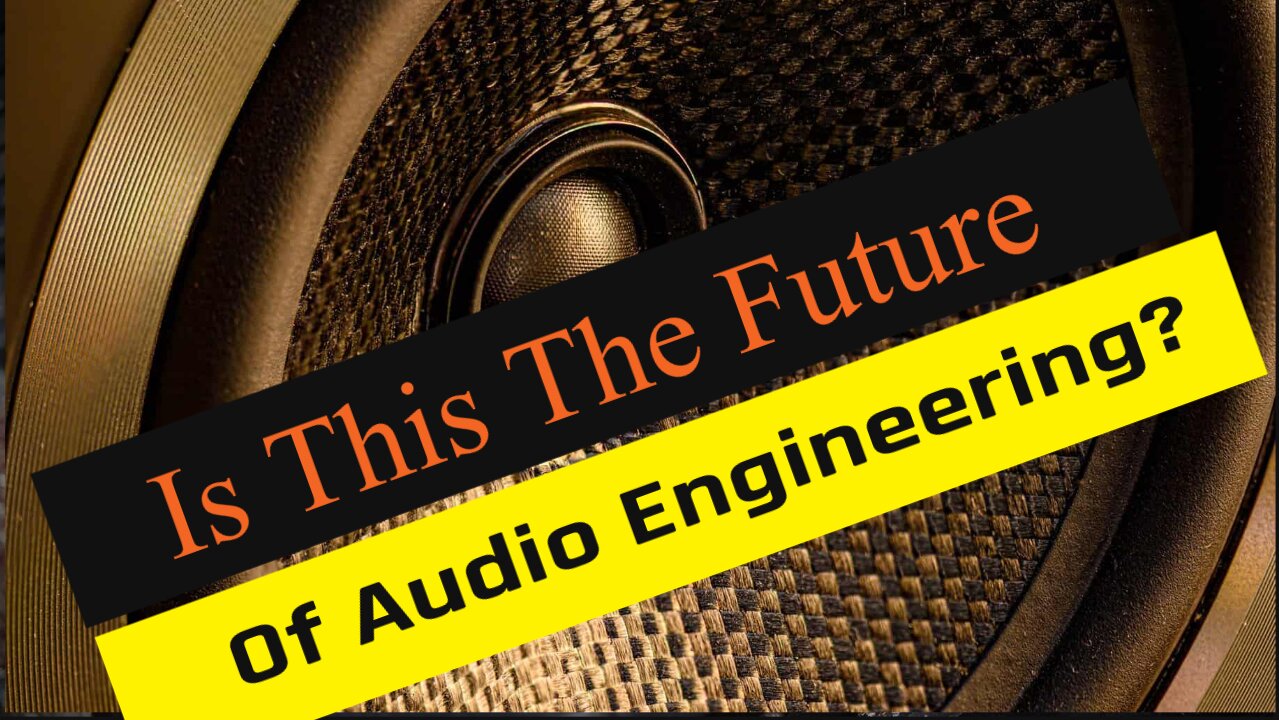Premium Only Content

The Future of Audio Engineering Revealed in 2023 | #mastering #audio
The time has come to redefine our understanding of audio engineering, music mastering, and mixing for that matter, incorporating the new A.I tools that are revolutionizing the world of audio. Think Beatles 'Now & Then' as another example for the future of audio engineering.
Have you ever wondered what mixtering is and why it's revolutionizing the audio industry?" Mixtering is an audio engineering term created by mixing and mastering engineer, Edward Vinatea in the late 1980's. Today, we're going to dive into this fascinating concept that's reshaping the way we think about sound engineering.
Mixtering, at its core, is a blend of traditional mixing and mastering. It's a departure from the age-old notion of music "mastering" as a separate, stand-alone process. This isn't a brand new idea, but it's garnering more attention in the industry as professionals seek to optimize sound quality. Now, you might be wondering, what's the difference between mixtering and an engineer doing both mixing and mastering? Well, it's all about the environment.
Many mixing engineers try to master their own work, but they often lack the necessary experience or skills to do so effectively. Moreover, they usually conduct the mastering in the same room they used for mixing. This room isn't designed for mastering, it's cluttered with equipment, furniture, and other elements that can interfere with sound quality.
This is where mixtering sets itself apart. It's not just about combining the processes of mixing and mastering; it's about creating the ideal environment to do so. I'm talking about a neutral listening environment, a space that's carefully designed and fine-tuned to eliminate sound reflection problems and optimize sound quality. In this space, the mixtering process can be carried out with precision. Without a large console or mixer, the workspace is reduced in size, minimizing potential reflective surfaces.
The mixing process usually begins with stems, allowing for processing beyond the specifications and limitations of the system. A mix is divided into main stereo groups, or stems, which then produce the stereo 'production mix'. This mix is then fine-tuned and "mastered" to the desired target format.
This isn't a process for the faint-hearted; it requires focus, extensive music engineering experience, and a deep understanding of sound. But when done right, the results can be exceptional, giving life to mixes that were previously thought to be beyond repair. "This is what sets apart professionals in the field, who have created the ideal environment and workstation for mixing and mastering, or as we now call it, mixtering.
Contact EV Sonic Lab:
https://evsoniclab.com
Email: mastering (at) evsoniclab.com
#mixtering #audioengineer #mastering
-
 1:58:04
1:58:04
FreshandFit
4 hours agoWhy Women Are Always Single?
104K24 -
 1:12:39
1:12:39
Man in America
12 hours agoThe Frightening Truth About Weather Warfare & Depopulation w/ Kim Bright
103K43 -
 2:59:21
2:59:21
TimcastIRL
6 hours agoTrump Calls Epstein Case A HOAX By Democrats, GOP Votes TO BLOCK Release | Timcast IRL
226K249 -
 10:17
10:17
Dr Disrespect
15 hours agoIt's Time To Get Serious
26.3K9 -
 DVR
DVR
SpartakusLIVE
8 hours agoDuos w/ Sophie || Charity stream tomorrow!
57.8K -
 58:43
58:43
Sarah Westall
7 hours agoBecause Voluntary Extermination is a Thing: Israel-Gaza w/ Award Winning Journalist James Robins
42.7K11 -
 4:44:13
4:44:13
BubbaSZN
8 hours ago🔴 LIVE - TRYING TO NOT BUST A$$ THIS TIME (THPS3+4)
26.5K1 -
 8:42:11
8:42:11
sophiesnazz
11 hours ago $1.71 earnedGENUINE BELTERS IN ERE l LIVE WITH @SpartakusLIVE!socials
41.5K1 -
 1:15:18
1:15:18
Glenn Greenwald
9 hours agoTrump Promises More Weapons for Ukraine; Trump Again Accuses Dems of Fabricating Epstein Files | SYSTEM UPDATE #487
137K88 -
 3:48:04
3:48:04
This is the Ray Gaming
4 hours ago $0.87 earnedTuesday Night is FOR THE BOYS | Rumble Premium Creator
17.9K2